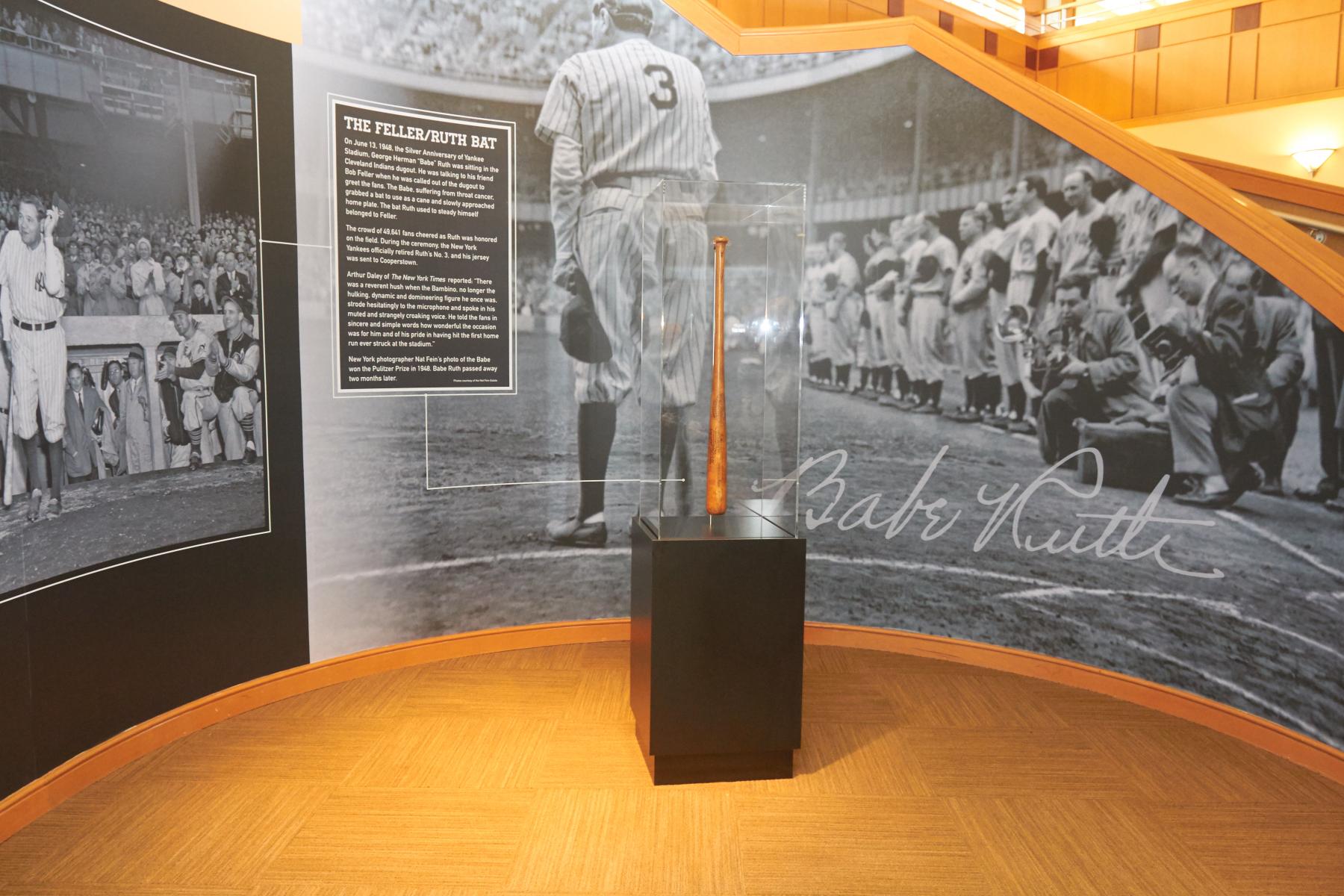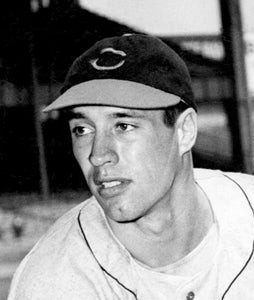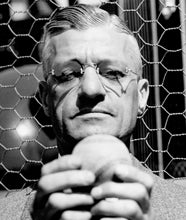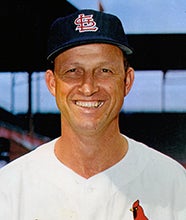- Home
- Our Stories
- Bat or cane, this lumber’s legend lives on
Bat or cane, this lumber’s legend lives on
The National Baseball Hall of Fame and Museum has received, on loan from the Cleveland Guardians, one of the most iconic and well-traveled pieces of baseball history: Bob Feller’s bat, which supported Babe Ruth as the Yankees retired his number on June 13, 1948. Both Feller and Ruth autographed the legendary piece of lumber.
“The bat is significant to the organization because it ties together two of baseball’s all-time greats,” said Jeremy Feador, the Guardians’ team historian. “It also represents a monumental moment in baseball history, with the Babe saying goodbye to New York and fans of baseball.”
Hall of Fame Membership
There is no simpler, and more essential, way to demonstrate your support than to sign on as a Museum Member.
Be A Part of Something Greater
There are a few ways our supporters stay involved, from membership and mission support to golf and donor experiences. The greatest moments in baseball history can’t be preserved without your help. Join us today.
That Yankee Stadium ceremony, during which Nat Fein captured one of the sport’s most celebrated images, served as a reunion for the franchise already boasting 11 World Championships. Those who had donned the pinstripes, whether they’d shared the field with Ruth or not, were eager for a final moment with the ailing Babe as he suffered from throat cancer.
Retired players in attendance first gathered in the clubhouse.
“It was a noisy and merry place as they poked fun at the high foreheads and the low chests,” wrote the Akron (Ohio) Beacon Journal. “They marveled over the fine physical fitness of some and a lot of them boasted that they could still do a good job out there on the mound or in the field. It was just a jovial gathering of the old Yankee clan.
“And then the Babe entered the dressing room! The shock was terrific. Nobody was prepared for it. The impact simply froze every man there and resulted in a long moment of embarrassing silence.”
Ruth, whose cancer made speaking a challenge, acknowledged his admirers.
The Yankees used the third base dugout during Ruth’s playing days but had since moved across the diamond. Ruth’s locker had remained in the third-base clubhouse, though, which the visiting Cleveland Indians occupied that weekend. With assistance, the Babe dressed in his pinstriped No. 3 uniform before sitting in the visitors’ dugout. Cleveland first baseman Eddie Robinson recalled the day in his memoir: “Lucky Me: My Sixty-Five Years in Baseball”.
But Ruth hadn’t come just for an audience of Yankee greats. Outside, 49,641 eager fans had filled The House That Ruth Built to embrace their hero. To stand without his personal physician’s aid, Ruth used a makeshift cane: a bat belonging to scheduled starter Bob Feller, who was warming in the bullpen.
“The fans nearly raised the Stadium roof with a tremendous cheer when the Babe was introduced,” The Boston Globe wrote. “He came strolling out of the visiting team’s dugout, wearing his famous uniform and swinging a bat. He obliged photographers by posing for them with his familiar swing.”
The ensuing ceremony included a speech by American League president and 1972 Hall of Fame inductee Will Harridge. “I declare Ruth’s uniform officially retired,” Harridge said. “It never again will be worn by a Yankee player either at the Stadium or on the road. It is worn today by the Babe for the last time.
“Babe is one of baseball’s immortals. His contribution to the game cannot be measured. It is with deep appreciation for what he has done for baseball that I hereby present his uniform to the Hall of Fame.”
That uniform, which Ruth also wore during filming of The Pride of the Yankees, is on display at the Museum in Cooperstown as part of the Babe Ruth: His Life and Legend exhibit.
Arduous as it was, Ruth addressed the crowd after Harridge: “Ladies and gentlemen, I just want to say one thing. I am proud I hit the first home run here against Boston in 1923. It is marvelous to see these 13 or 14 players who were my teammates going back 25 years. I’m telling you it makes me proud and happy to be here. Thank you.”
The festivities wouldn’t have been complete without an old timers’ game. A two-inning exhibition took place between the 1923 Yankees, the franchise’s first champions, and a collection of more recent Yankees. Ruth managed the former. Ed Barrow, the Hall of Fame executive whose accomplishments in the Bronx included helping build Yankee Stadium, convincing Ruth to convert from pitcher to outfielder and signing Joe DiMaggio, managed the latter.
New York beat the Indians, 5-3, in the afternoon’s official contest. Feller took the loss in an unremarkable outing, but his unknowing impact on the pregame ceremony lives on.
“For Cleveland to have played a part in that is a special moment in our history,” Feador said.
Beginning in 1952, Robinson would own a Baltimore restaurant called Eddie Robinson’s Gorsuch House and display the bat there before eventually selling it. From there, the bat is believed to have been owned by various collectors.
Then, in December of 2000, a Seattle-area couple named Larry and Sally May won the bat in an Upper Deck contest. The following summer, the retired couple sold it to Feller himself.
“We really feel like it has come full circle," Sally told the Seattle Times. "It was great to win it. It was great to be able to share it with the kids and everyone we shared it with. It's time now."
Feller made it a prized addition to the Bob Feller Museum in Van Meter, Iowa, not far from the family farm where he’d learned to throw his Hall of Fame repertoire. At the museum, The New York Times reported, Feller hosted fellow Hall of Famers including Stan Musial and Yogi Berra for fundraising events. But in 2015, five years after Feller passed away, the museum closed due to funding issues. The building became Van Meter’s city hall while continuing to display some of Feller’s memorabilia.
Other items, including the famed bat, filled a new Bob Feller exhibit inside Cleveland’s Progressive Field. Thanks to the Guardians’ organization, the Hall of Fame is proud to temporarily reunite Ruth, Feller and his bat.
Justin Alpert was a digital content specialist at the National Baseball Hall of Fame and Museum
RELATED STORIES
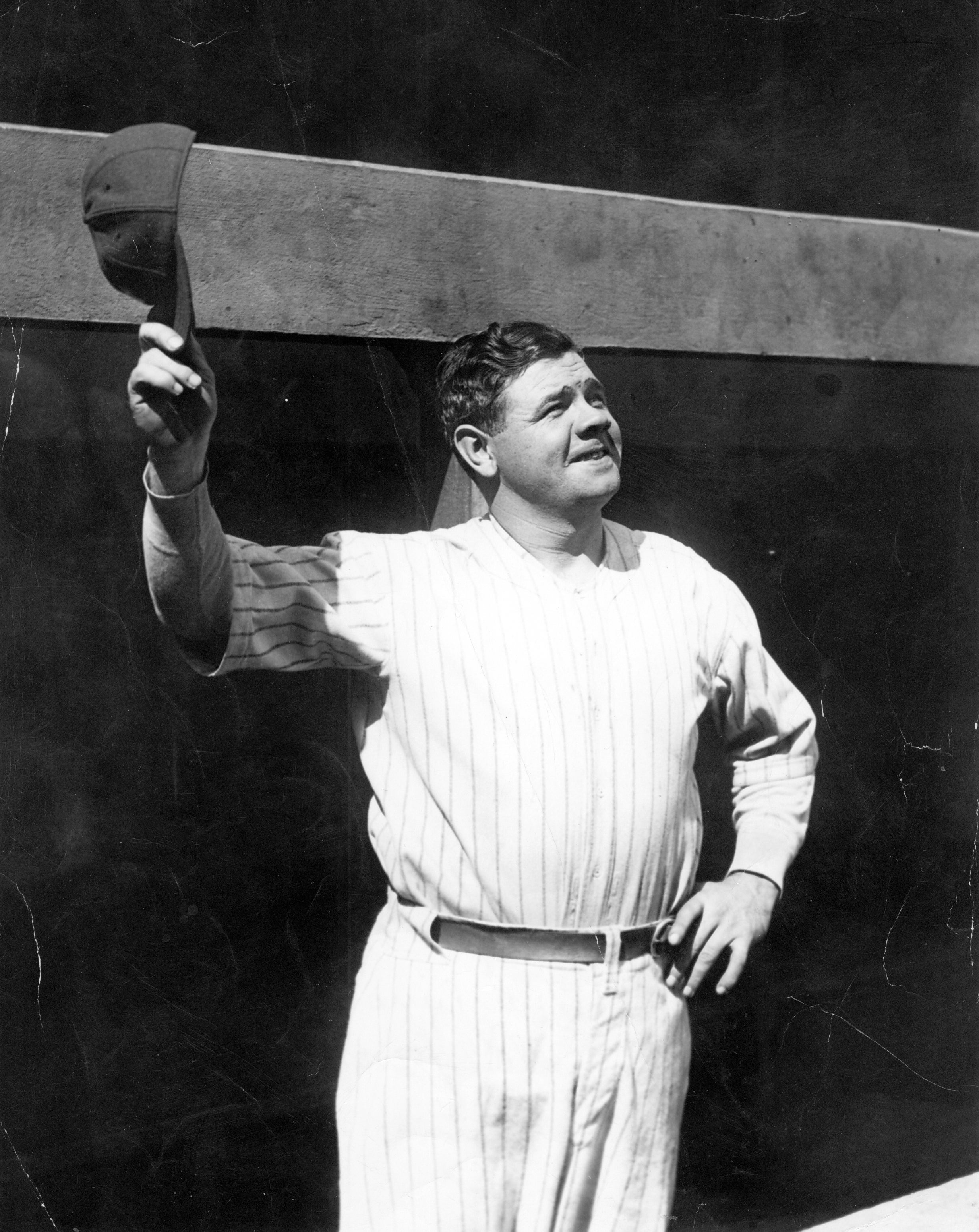
Historic Ruth jersey a part of Hall of Fame history
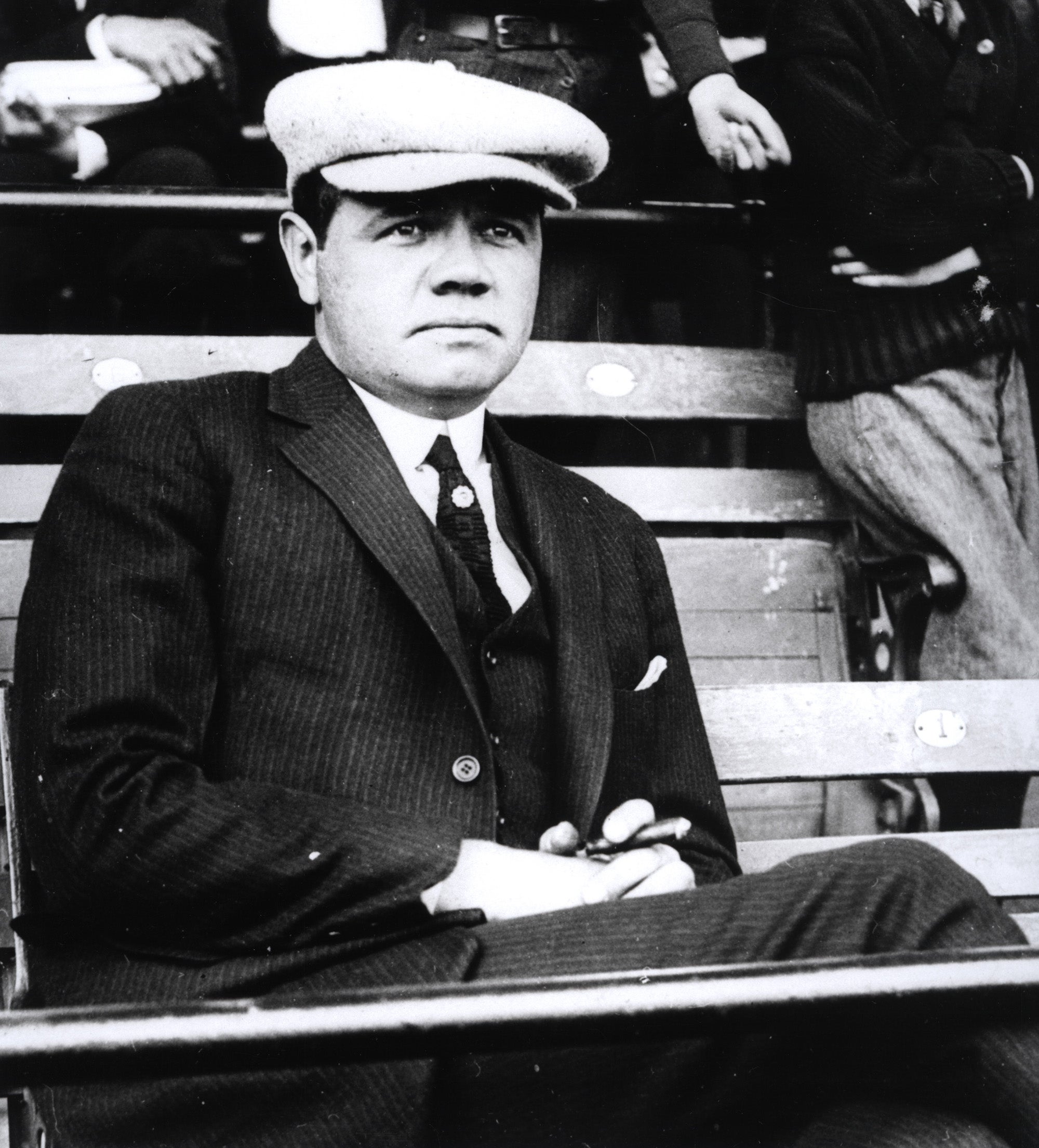
Ruth’s passing stunned baseball world
Making of a Legend
RELATED STORIES

Historic Ruth jersey a part of Hall of Fame history




